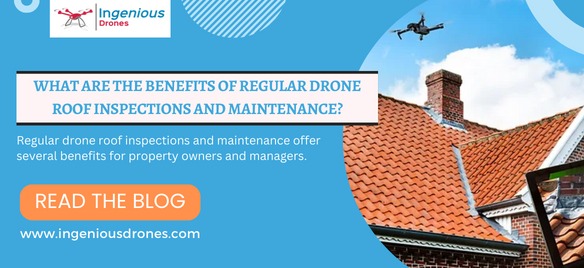Regular drone roof inspections and maintenance offer several benefits for property owners and managers. Drones, equipped with cameras and sensors, provide a cost-effective and efficient way to assess the condition of roofs. Here are some key advantages:
- Early Detection of Issues:
Drones can capture high-resolution images and videos, allowing inspectors to identify potential issues early on, such as damaged shingles, cracks, or leaks. This early detection helps prevent small problems from turning into major, costly repairs.
- Time and Cost Savings:
Drones inspections are typically quicker and more cost-effective than traditional manual inspections. They eliminate the need for scaffolding or other access equipment, reducing labour costs and time spent on-site.
- Enhanced Safety:
Roof inspections can be dangerous, especially for steep or high roofs. Drones eliminate the need for personnel to physically climb onto the roof, reducing the risk of accidents and injuries.
- Access to Inaccessible Areas:
Drones can reach areas that are difficult or unsafe for human inspectors to access. This includes tight spaces, corners, and sections of the roof that might be challenging to inspect manually.
- Detailed Imaging and Documentation:
Drones equipped with high-resolution cameras and sensors can provide detailed imaging and documentation of the roof’s condition. This information is valuable for record-keeping, insurance claims, and future maintenance planning.
- Efficient Data Analysis:
The data collected by drones can be analysed using advanced software to generate detailed reports. This data analysis can provide insights into the overall health of the roof, helping property owners make informed decisions about maintenance and repairs.
- Preventive Maintenance Planning:
Regular drone inspections allow property owners to implement a proactive maintenance plan. By addressing minor issues before they escalate, property owners can extend the lifespan of the roof and avoid more significant repair costs.
- Environmental Impact:
Drones have a smaller environmental footprint compared to traditional inspection methods. They don’t require heavy machinery or large vehicles, reducing the impact on the environment.
9. Compliance and Regulations:
Drones inspections may help property owners comply with safety regulations and building codes. Regular inspections demonstrate a commitment to maintaining the property in a safe and compliant manner.
10. Insurance Premiums:
Proactive roof maintenance, supported by drone inspections, can lead to lower insurance premiums. Insurance providers may view regular inspections as a sign of responsible property management, reducing the risk of claims.
In summary, regular drone roof inspections and maintenance contribute to cost savings, improved safety, and better overall property management. They enable property owners to address issues early, extend the lifespan of the roof, and make informed decisions about maintenance and repairs.


Recent Comments